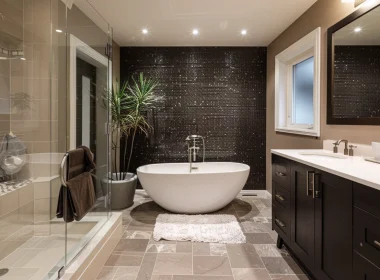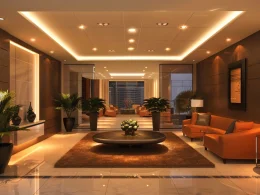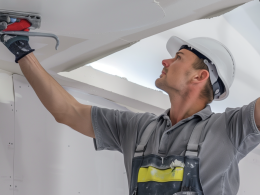When considering the ceiling texture of modern houses, smooth ceilings are a popular choice for their sleek and contemporary look.
However, while they may appear flawless and stylish, smooth ceilings have drawbacks that homeowners should be aware of before deciding.
In this article, we’ll explore the downsides of smooth ceilings, including their tendency to show imperfections, poor noise reduction, and higher installation costs compared to textured ceilings.
By understanding these potential issues, you’ll be better equipped to choose the right ceiling type for your home, ensuring aesthetic appeal and practicality.
Main Drawbacks of Smooth Ceilings
1. Visibility of Imperfections
One of the primary drawbacks of smooth ceilings is their tendency to highlight every little flaw and imperfection.
Unlike textured ceilings, which can help hide minor dents, scratches, and other marks, smooth surfaces fully display these blemishes.
Even small imperfections that may go unnoticed on a textured ceiling can become glaringly obvious when the surface is completely flat and smooth.
This visibility of flaws can make it challenging to maintain a flawless appearance, especially in high-traffic areas or rooms prone to wear and tear, such as living rooms or playrooms.
Homeowners may find themselves constantly touching up or repairing their smooth ceilings to keep them looking pristine, which can be time-consuming and costly.
In contrast, textured ceilings offer a more forgiving surface that can help conceal minor imperfections, reducing the need for frequent repairs and touch-ups.
This can be particularly advantageous for households with children or pets, where accidental dings and scratches are more likely to occur.
2. Cost Implications

Regarding installation costs, smooth ceilings are more expensive than their textured counterparts.
Installing a smooth ceiling can cost between $225 and $545 for a 250-square-foot area, while a textured ceiling for the same size ranges from $350 to $440.
The higher cost of smooth ceilings is due to the additional labor and materials required to achieve a perfectly even and blemish-free surface.
To create a smooth ceiling, skilled professionals must skim the surface with drywall mud, sand it down, and ensure a flawless finish before painting.
This process is more time-consuming and labor-intensive than installing a textured ceiling, which can often help mask minor imperfections in the drywall installation.
In addition to the initial installation costs, homeowners should consider the long-term financial implications of maintaining a smooth ceiling.
Over time, these costs can add up, making smooth ceilings a potentially more expensive option in the long run.
3. Acoustic Disadvantages
Another significant downside of smooth ceilings is their lack of noise-reduction capabilities.
Unlike textured ceilings with a slightly uneven surface that can help absorb sound waves, smooth ceilings reflect sound, increasing echoes and reverberation within a room.
This can create an acoustically uncomfortable environment, especially in large, open spaces or areas with hard flooring.
The acoustic properties of smooth ceilings can be particularly problematic in homes with high ceilings or rooms where noise levels are a concern, such as bedrooms, home offices, or media rooms.
The sound reflections can make it difficult to hold conversations, concentrate on work, or enjoy multimedia content without distractions.
In contrast, textured ceilings, with their slightly raised patterns, help break up sound waves, reducing echoes and creating a more acoustically balanced space.
While textured ceilings may not provide the same level of sound absorption as professional acoustic treatments, they can still offer a noticeable improvement in noise reduction compared to smooth ceilings.
Homeowners considering smooth ceilings should carefully evaluate the potential impact on living comfort, particularly if they are sensitive to noise or reside in areas with high ambient noise levels, such as busy streets or urban environments.
In some cases, the aesthetic appeal of smooth ceilings may be outweighed by the acoustic disadvantages, making textured ceilings a more practical choice for improved sound control and overall comfort.
Conclusion
While smooth ceilings offer a sleek and modern look, they come with several drawbacks that homeowners should carefully consider.
From the visibility of imperfections and higher installation and maintenance costs to the lack of noise reduction capabilities, smooth ceilings may not be ideal for every home.
By weighing these factors against your personal preferences, budget, and living environment, you can decide whether a smooth or textured ceiling best fits your space.
Ultimately, the key is to balance aesthetic appeal and practical considerations to create a comfortable and inviting home.
If you found this article helpful, check out our other home improvement guides for more tips and insights on creating your dream living space.











